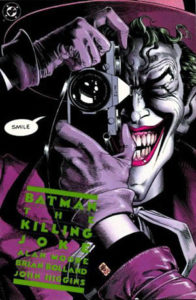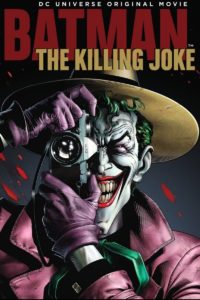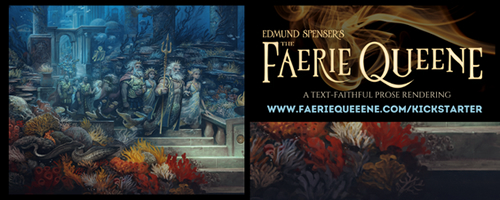Some Jokes Are Not Funny
DC Comics and Warner Bros. Animation recently released an animated movie adaptation of one of the most iconic graphic novels of all time, Batman: The Killing Joke. The book was written by  comic deity Alan Moore, the guy who also wrote Watchmen, considered by many to be the greatest superhero comic series and graphic novel ever written. B:TKJ is more grim and nihilistic than Watchmen but there is a cynical undertone in both works (and in Moore’s other creations as well).
comic deity Alan Moore, the guy who also wrote Watchmen, considered by many to be the greatest superhero comic series and graphic novel ever written. B:TKJ is more grim and nihilistic than Watchmen but there is a cynical undertone in both works (and in Moore’s other creations as well).
Like all movie adaptations, the motion picture version of B:TJK hardly does justice to the source material. It’s not a bad movie, but it falls prey to the common cold for book-to-movie adaptations: overemphasis on action, added and often unnecessary characters and subplots, and tweaks to major characters and their motivations that gets fanboys all in a tizzy. I don’t consider myself to be a fanboy but there were things in B:TKJ that really irritated me. Watch it for yourself and you’ll know exactly what I’m talking about.
Moore’s books are rarely kid-friendly and B:TKJ is no exception. Warner Bros. Animation made the surprising step to make the movie version rated R for violence and disturbing images. I was bracing for a manga-esque bloodfest but the violence was thankfully subdued, though there were some gory moments. The PG-13 film Under the Red Hood had an almost comparable amount of violence, but B:TKJ is a far more sinister story. And of course, there is the crucial scene that has gone down in history as one of the Joker’s most depraved acts. I get chills when I see the cover of the book because I know what he is photographing. The movie doesn’t linger on this scene, which is good for one’s nerves but also weakens the story overall, because it is such a gripping manifestation of the Joker’s insanity.
It’s been sev eral years since I read B:TKJ and the movie brought back many haunting memories, but one thing that was consistent throughout both the book and the movie was the Joker’s eagerness to be insane (the movie even has a jangly show tune about this very topic). The cause of his insanity is a bit rushed and not entirely convincing, but one gets the impression that he wouldn’t want to go back to “normal” life even if he could. He’s not battling inner demons the way Batman does; he welcomes them in for a cup of tea. His sociopathic lack of empathy is one of his most disturbing character traits, and it manifests on his victims and his accomplices (news flash for any Hot Topic tweens that might read this: Harley Quinn is not a cherished girlfriend).
eral years since I read B:TKJ and the movie brought back many haunting memories, but one thing that was consistent throughout both the book and the movie was the Joker’s eagerness to be insane (the movie even has a jangly show tune about this very topic). The cause of his insanity is a bit rushed and not entirely convincing, but one gets the impression that he wouldn’t want to go back to “normal” life even if he could. He’s not battling inner demons the way Batman does; he welcomes them in for a cup of tea. His sociopathic lack of empathy is one of his most disturbing character traits, and it manifests on his victims and his accomplices (news flash for any Hot Topic tweens that might read this: Harley Quinn is not a cherished girlfriend).
The way I see it, the Joker is a very good allegory for the human soul and psyche stripped of God’s grace. Man’s fallen nature doesn’t just wallow in sin; it runs headlong into sin’s arms. It bends to the will of Satan – the destroyer, the creator of chaos, the antithesis of everything God embodies. And what could be more maddening than staring into the abyss of an eternity removed from God? Apart from God’s grace, there is no penitence, no contrition, no horror at one’s own fallen nature. We have a hunger for the madn ess of sin and death that we must indulge, but the power of God’s saving grace overcomes that hunger and turns it towards Himself.
It is a good sort of madness to surrender to, but it does not produce chaos and pain. It produces the peace that passes all understanding and a tranquility beyond all human reasoning. Many may call that insane, and if that’s the case, lock me up and take me to Arkham.






































